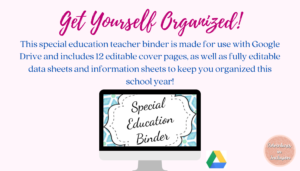
The Pros & Cons of Teacher Proximity
Using your presence can be a powerful tool in the classroom. It makes you more accessible, helps with classroom management, and it can be subtle. But, is teacher proximity always a good thing?
Teacher Proximity: What is it?
One popular technique for classroom management is using your person to influence what is happening in the classroom, or teacher proximity. Standing close to students or standing strategically in a certain area of the classroom can affect the students and the mood of the classroom in different ways.
Pro: Chatty Students
If you have a group of students that is always chatty when they think you are not looking, this is a very common use of teacher proximity. If you find a way to station an adult near them, they feel like you can see them and are paying attention to them and this often prevents them from chatting so much.
This is very useful in a classroom where there are two or more adults. If I am circulating while another teacher is at the board teaching something, I station myself strategically in the classroom. I will stand near a group of students who are usually whispering to each other, thinking that we are not listening. Or, if I have two students that do not necessarily sit near each other, but are constantly trying to get each others’ attention or pass messages back and forth; I will stand in between them, blocking their path to each other. This is a great tool for classroom volume and keeping it under control.

Con: Can enable helplessness
We as teachers, especially in middle school where It each, are working with our students to gain independence. If I am constantly near a student, they are not going to try to solve their problem on their own, they are going to ask me for help since I am so conveniently located. Not constantly being near your struggling students may encourage them to seek out other ways to find an answer to their question before they seek you out. If you are in math, will they check the example on the board or in their book before they ask you? Maybe! Let me be clear, we, of course, want kids to ask us questions when they need to, but we also want to encourage them to come up with different strategies to help themselves.
Pro: Focuses on inattentive students
We all have students in our classrooms that struggle with focusing on a lesson. If the second teacher in the room walks by a student who is not paying attention, your presence can often remind them to focus or snap them out of their daze. Sometimes your presence isn’t enough, when you are walking by the student who is struggling to pay attention, you can make a quiet tap on their desk to get their attention and redirect them. Or you can make eye contact and subtly point to the source of instruction to remind them they need to be paying attention.
Con: Making students stand out
If you are constantly talking to the same few students, it may become obvious to the rest of the class that those students need extra help. Personally, I work in a middle school where the students are always very concerned about how their peers perceive them. I try not to affect this.
I work in an inclusion setting and I think that it is important that I spend a significant amount of time helping students who do not have learning disabilities so that it is not obvious who is on my caseload and who is not. If it is normal for you to constantly be helping all students or even stopping to check in with all students who do not need help when you do stop and help a student with a learning disability it is not as obvious to their peers. This also helps the students’ opinions of you. They don’t groan and ask me to leave them alone when I come near them because it is not drawing negative attention from their peers.
In summary:
There are times that teacher proximity is a great tool, but there are also times that you need to be careful with it. As long as we are being purposeful with where we are standing and who we are helping in the classroom, this can be a great classroom management technique.
Great resources:
Get your free IEP summary page!

Subscribe to get our latest content by email.







